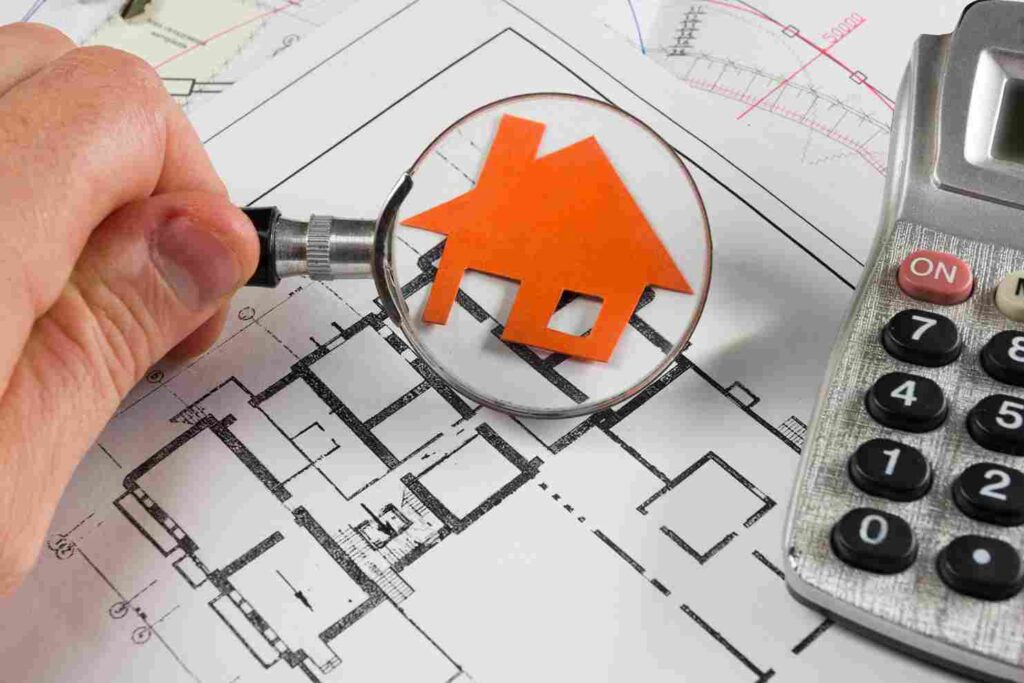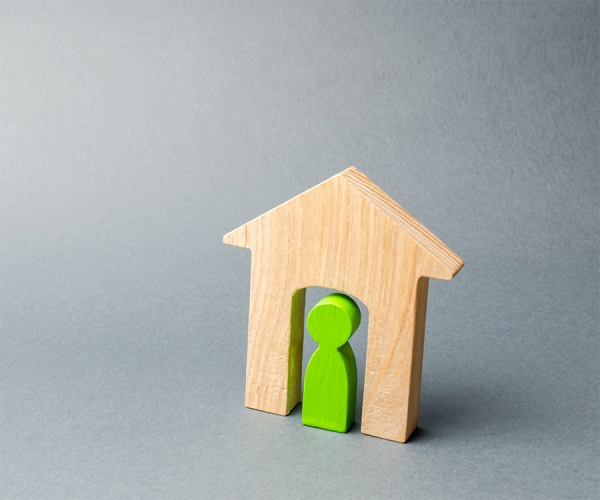
Some landlords enter the sector when they inherit a property or decide to move in with a partner and let their home out to cover the mortgage. They are known in the biz as ‘accidental landlords’ because letting out the property was not their original intention. However, data from the National Landlords Survey 2018 [link downloads as PDF] revealed that more than half (53%) of landlords had bought a property with the intention of letting it out.
If this is your intention, then it’s critical that you choose the right property. In fact, we would go as far as to say that your property choice can potentially make or break your buy to let business.
In this article, we’re going to touch on everything you need to know about buying a buy to let property, from tenant profiles to rising damp and beyond. Grab a coffee and read on to find out how to buy the right property to rent out.
Build a Picture of Your Target Tenant

Before you start browsing properties for sale on Rightmove or Zoopla, decide what type of tenant you want to target. Tenants and properties are inextricably linked. Certain types of tenant will want particular types of properties. Common examples include:
- Families: they want larger homes with a minimum of two beds and a garden.
- Students: they need digs close to their university/college and local amenities.
- Benefits tenants: they need cheap properties and good amenities close by or good transport links.
- Young singles or seasonal workers: they may need multiple occupancy properties.
- Upwardly mobile professionals: they will probably be seeking city centre properties of a certain calibre or those with excellent transport links.
- Holiday lets: look for a property in a desirable area to maximise your income.
Think carefully about your target tenant and create a wish-list just for them. If the property you buy doesn’t fit this wish list, you’ll need to go back to the drawing board in terms of tenant, which could upset your business plan and make it harder to find anyone suitable.
Put Your Personal Property Tastes to One Side
An Englishman’s home is his castle, or so the saying goes, but when you invest in property to let out to tenants, it’s important to put your own tastes aside. External factors, such as public transport links and schools might not be an issue for you, especially if you own a car and you’re retired, but there are plenty of tenants who place a great deal of importance on convenient bus routes and good schools.
You can’t cater for everyone, but it’s important to put yourself in your tenant’s shoes. Think about what they will look for in a rental home. Are they likely to have kids? Will they need to catch public transport? Or will they be looking for a property close to the local university?
The more boxes your property ticks, the easier it will be to find a suitable tenant.
Have a Property Budget in Mind

In an ideal world, we’d all have an unlimited budget. Sadly, unless you have a winning lottery ticket stashed away, there is a limit to your buying power. You may also be tied by a mortgage.
Decide in advance what your purchasing budget is and stick to it. Buy to let is a business and like any business, there are inherent risks. Properties are generally a good investment and most properties appreciate in value over time. However, if you pay over the odds for a property that is not a good fit for your target tenant, it could end up empty for long periods or be difficult to sell when the time comes to offloading your investment.
Create a business plan. Consider all of your expenses, including:
- Conveyancing fees
- Estate agent costs
- Mortgage arrangement fee
- Insurance
- Renovations/maintenance
- Letting agent fees
- Void costs if it takes a while to find a tenant
Once you have a budget, stick to it when searching for suitable properties. Don’t waste your time looking at more expensive properties unless you think there is room for negotiation on the price.
Identify a Target Area
It’s common for landlords to purchase a buy to let property close to where they live. This makes a lot of sense for obvious reasons: the property is close enough for you to keep an eye on it and if your tenants need anything, you don’t have to travel miles to sort it out.
Always keep your target tenant in mind. For example, let’s say you live in a pretty village with very expensive homes (lucky you!) but your plan is to become a student landlord. It is pointless looking at properties in your immediate area, as students will want to live within a small radius of their campus.
Look at areas where your target tenant is actively looking for a home. Research rental yields in your target areas and bear in mind property price trends. For example, it makes sense to purchase a property in an area where major transport links are planned or a big employer is building a massive factory, thus guaranteeing jobs.
Remember, it’s not whether you like an area – it’s whether the area fits your budget and whether your target tenant will want to live there.
Buying an out of town property
Don’t assume that you have to search in your own local area. Some parts of the UK offer much better rental yields than others, so if you are willing to let an agent take care of the day-to-day running of your property, buying somewhere cheaper/more profitable might make good business sense.
Do some research. Compare different areas to see which ones stack up the best. Don’t forget to take into account travel costs if you plan on managing your own properties.
Have a Property Purchasing Wish-list
Now that you have your target area nailed down, it’s time to draw up a property wish-list. Remember, this isn’t your dream home you are searching for, so don’t be put off by décor that isn’t to your taste or communal living if you’re viewing an HMO.
Key things to bear in mind include:
The type of building
Some tenants prefer flats whereas others want a house with a garden. There are pros and cons to each, so decide which one best suits your target tenant and budget. Remember: flats often come with additional costs in the form of leaseholder maintenance charges/fees. Factor this into your budget calculations.
Older properties are common in towns and cities. Visit any large town or city and you’ll see endless streets of back-to-back terraces. Homes built pre:1950s are often cheaper and they typically have larger rooms, but they can require more maintenance. They have bags of character, but unfortunately can often have rising damp, wet rot, and dodgy drainage.
If you don’t have a passion for DIY and your budget won’t stretch to extensive renovations, be wary of purchasing an older property that “needs work”.
Newbuilds offer a lot of advantages, including modern kitchens, bathrooms, and energy efficiency measures, and you can even buy off-plan and choose your own spec. But don’t assume a new-build property is problem-free: the quality of construction in many new builds is dubious, to say the least and some come with a long list of snagging problems. In addition, they are often in out of town locations, which isn’t suitable for all types of tenant.
Maintenance and repairs
Repairs and maintenance can be a significant cost for landlords. As a landlord, you are required by law to ensure your rental properties are fit for human habitation. This includes making repairs when necessary and adding improvements such as replacement windows, kitchens, and bathrooms when the old ones have outlived their usefulness.
Electrical circuitry
Look at the fuse box, plug sockets, etc. If the wiring looks old, factor in the cost of a full rewire. Electrical safety is very important. Faulty wiring causes fires, usually when it’s overloaded with TVs, computers, gaming consoles, and Christmas tree lights.
Damp and mould
Older properties are prone to damp. You can’t let tenants live in damp houses. If a property is riddled with damp, walk away unless you want to bear the cost of fixing it. In many cases, fixes are usually only temporary, so you’ll have an ongoing problem, especially if the floors at ground level are timber, not concrete.
The older the property, the more repairs and upgrades are likely needed. A lot of rental properties are old housing stock, which means they are often in poor condition. Landlords prefer this type of property because it’s cheaper and rooms tend to be larger. If you elect to buy an older property, factor in the increased cost of maintenance and general upkeep.
Maintenance is something to bear in mind when searching for any property, but especially older ones. If you are a hands-on landlord or have a list of reliable tradespeople on speed-dial, an older property probably won’t bother you in the slightest. Plastering and plumbing are all in a day’s work for you!
Fixtures and Fittings
Kitchens and bathrooms are two rooms that cost a lot of money to modernise. Unless the property is very cheap and your budget permits a spending spree, look for a house or flat with a decent quality kitchen and bathroom. It’s better if you can move tenants in straight away, rather than embarking on a two-month program of renovations while still having mortgage repayments to make.
Be wary of personalised kitchens and bathrooms, too. Neutral and plain are usually best. Not everyone wants a red kitchen or black bathroom. Don’t make finding a tenant harder than it needs to be.
Mortgage Costs
Factor in your mortgage costs before you start looking at properties. Most lenders expect landlords to set the rent at a minimum of 125% of the mortgage repayment. Don’t buy a property if this is unachievable, or you’ll struggle to find a tenant.
This is where research pays dividends. Check out rental prices on Rightmove and Zoopla for similar properties in your target area. Speak to local letting agents and see what tenants are willing to pay for properties similar to those you’re considering. If the figures don’t add up, go back to the drawing board.
Broadband Speeds
This may sound like an odd thing to factor in, but we all spend ridiculous amounts of time online these days, so terrible broadband speeds will put off a lot of tenants. Town or city locations normally have reasonable broadband speeds, as the infrastructure is there to support super-fast broadband. But once you move out into rural areas, broadband speed drops off a cliff.
Check broadband speeds in your target area and make sure they are adequate. Otherwise, you have ruled out a significant number of potential tenants, who rely on super-fast broadband as a given.
Energy Efficiency
Energy efficiency is also important. All properties are sold with an Energy Performance Certificate (EPC). Many buyers don’t pay much attention to this: they are more interested in broadband speeds and whether the décor is nice. But as a landlord, you should pay attention to the EPC. It tells you how energy efficient the property is and, therefore, how much it will cost a tenant to heat over winter.
The older the property, the more likely it will have a poor EPC. New guidelines came into effect in 2018. These state that rental properties must have an EPC value of E as a minimum. Any property rated F and below cannot be let to tenants.
If you have your eye on a derelict old terraced property with rotten windows and a dodgy roof, think twice unless you want to throw a lot of money at it.
The good news is that you can improve a property’s EPC value without spending a fortune on new windows and a new roof. Check out the loft insulation. If it’s inadequate, ram as much insulation as you can in there. 25% of a property’s heat is lost via the roof, so this makes a big difference. Switching out old lightbulbs for LED versions also helps.
Central heating boilers
Boilers are not terribly interesting, but they are important. Check out the boiler in any property you view. If it is more than 10 years old, budget for a replacement. Boilers must be serviced annually and if they break down, you can’t afford to hang around, they need to be fixed as a matter of urgency.
Older boilers tend to require more fixes and replacement parts. Sometimes, it’s cheaper to swap out an older boiler and replace it with a brand-new A-rated appliance that comes with a five-year warranty. Not only will it be cheaper to run, but it should also be more reliable.
Remember, tenants will want to minimise how much they spend on bills. A property with double-glazed windows and decent external doors, not to mention an energy-efficient boiler, will go a long way to attracting tenants, so it’s not money down the drain. In addition, any improvements you make all help to increase the property’s resale value, which we’ll discuss next.
Potential Resale Value
Whether you’re planning on making a long-term investment or not, think ahead to when you might need to sell the property.
For example, properties close to pubs, takeaways, and other commercial buildings are always harder to sell because mortgage lenders don’t like them, which shrinks your pool of potential buyers. On the other hand, most tenants or buyers will not want to live close to a noisy bar or takeaway.
Be sensible: would you want to live in the property? If there is anything that might put off potential buyers in the future, think twice before snapping up the property, even if it’s a great price.
You are much better off looking at properties in up-and-coming areas where values are likely to rise in the next five years or so. This represents an excellent capital investment.
Look for properties that only need cosmetic improvements if you want a bargain. This type of property is often overlooked because buyers tend to want a house or flat where they can move straight into without worrying about new carpets and decorating every room. If all it needs is some new flooring and a lick of paint, you’re on to a winner.
Negotiate on the Price
Always negotiate on the price. Since you are not emotionally invested in the property, you can afford to be tough and drive a hard bargain. Decide how much the property is worth to you after you have factored in the cost of improvements, etc. If the vendor isn’t willing to budge on their asking price, walk away. There are always other properties out there and you can afford to be patient.
Buying any property is stressful. Remember, take your time, approach the transaction from a business perspective, and don’t be swayed by estate agent sales patter. Their job is to sell you a property nobody else wants to buy, so if it looks too good to be true, it probably is!



